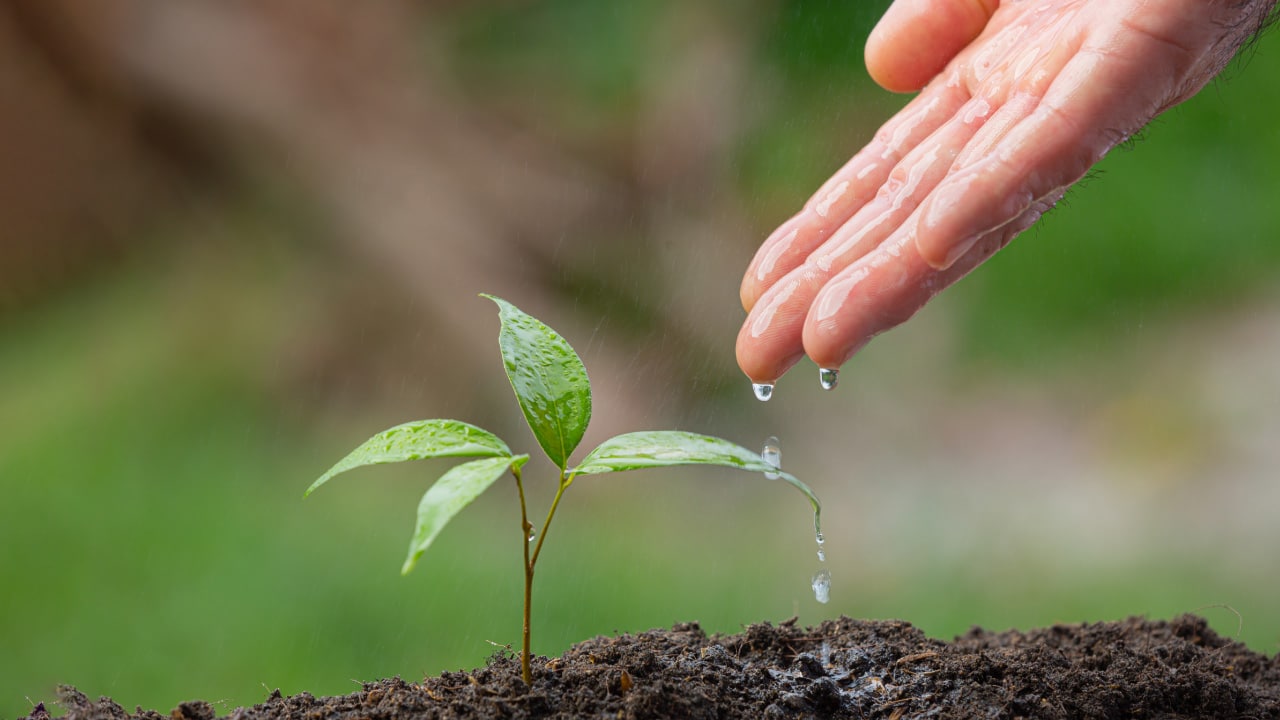
Maximizing Your Green: How and When to Water
No matter how well you think you understand the beautiful science of plant watering, there’s always more to know. When deciding how much to water and the best time to water plants, it’s a careful balance; water too little and roots will get shallow, but water too much and you create an open invitation for fungus. With a little insight from lawn care and landscaping professionals, we can all make better use of our water, and our plants and lawns will thank us. Read on as we share some best practices that will save your plants and conserve water.
Evaporation is the Secret
Watering plants correctly is one of the easiest things to learn in gardening, but many find it confusing. To get a better understanding of how to water, let’s discuss how plants and soil interact. Plants need enough water through their roots to grow properly, which happens when they have good root systems and the soil around their roots have plenty of water. When water is added to soil, it stays there until one of three things happen: the water runs away, plant roots suck it up or it evaporates. When too much water evaporates, the soil gets dry and roots no longer have water to absorb. Evaporation is affected by:
- Temperature: evaporation increases the hotter it gets.
- Type of soil: clay holds a lot of water, sand holds very little and peat moss is somewhere in between.
- Humidity: evaporation is slower in humid environments
- Wind: increases evaporation rate.
- Mulch: evaporation is significantly reduced when there is mulch on the soil surface.
Watering Schedules Don’t Work
How often should you water and when is the best time to water plants? It all depends. Now that you understand evaporation, you probably realize that it would be difficult to water plants in weekly or daily intervals because the above factors are always changing. For example, while it’s obvious that summer will always be hotter than winter, summer could be drier than winter one year and more humid the next, which affects the way you plan to water and how well your plants grow. As a result, any landscaping and lawn care professional will tell you it is better to be adaptive and flexible. Find an affordable lawn care provider near you for more tips tailored to your plants’ unique needs.
Monitor Your Soil to Know the Best Time to Water Plants
The best time to water plants is when the soil starts to get dry. Simple right? Use the finger meter to determine when your soil needs more water. Stick your finger a couple of inches into your soil and if it feels dry, it’s time to water. If it’s not dry, don’t water yet. But how much water does your garden need? In gardens, you should water until the soil is wet six inches below the surface. Watering properly takes a lot of time and water, so it is better to water less frequently and nourish deep into the soil than to water frequently, which is where watering schedules go wrong. Lawn care and landscaping professionals explain that deep watering is a wise approach because it encourages plants to develop deeper root systems which means they can withstand drier periods much better. Get in touch with an affordable lawn care provider to help your plants flourish.
Trust Our Lawn Care and Landscaping Professionals to Help Your Plants Thrive
Are you looking for affordable lawn care near you? We’re a team of professionals trained to help your yard thrive. We will work with your unique home and yard situation to ensure that your property is safe, verdant, and beautiful in every season. Make sure you’re taking the right steps to maintain the health of your lawn: contact Scott’s Lawn Care today.
